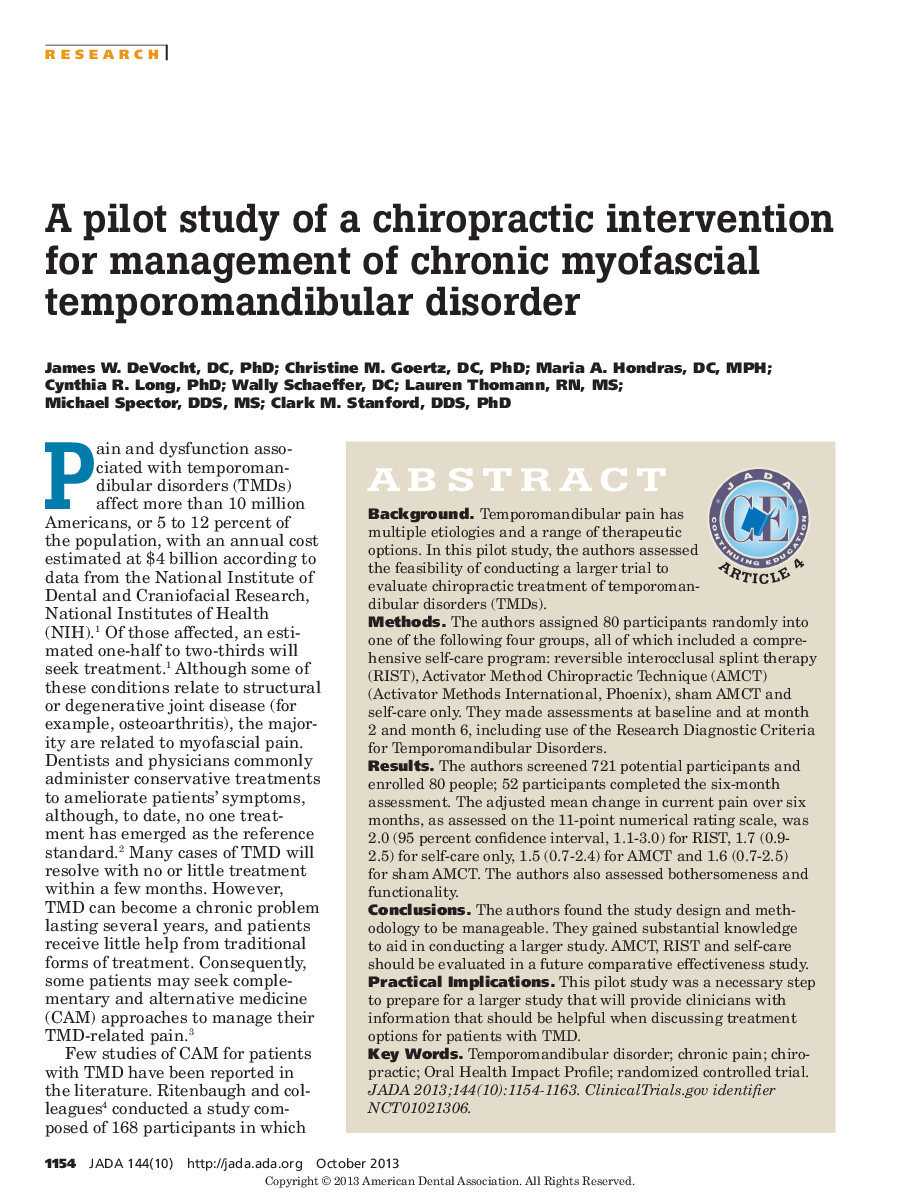| Article ID | Journal | Published Year | Pages | File Type |
|---|---|---|---|---|
| 3137355 | The Journal of the American Dental Association | 2013 | 10 Pages |
ABSTRACTBackgroundTemporomandibular pain has multiple etiologies and a range of therapeutic options. In this pilot study, the authors assessed the feasibility of conducting a larger trial to evaluate chiropractic treatment of temporomandibular disorders (TMDs).MethodsThe authors assigned 80 participants randomly into one of the following four groups, all of which included a comprehensive self-care program: reversible interocclusal splint therapy (RIST), Activator Method Chiropractic Technique (AMCT) (Activator Methods International, Phoenix), sham AMCT and self-care only. They made assessments at baseline and at month 2 and month 6, including use of the Research Diagnostic Criteria for Temporomandibular Disorders.ResultsThe authors screened 721 potential participants and enrolled 80 people; 52 participants completed the six-month assessment. The adjusted mean change in current pain over six months, as assessed on the 11-point numerical rating scale, was 2.0 (95 percent confidence interval, 1.1–3.0) for RIST, 1.7 (0.9–2.5) for self-care only, 1.5 (0.7–2.4) for AMCT and 1.6 (0.7–2.5) for sham AMCT. The authors also assessed bothersomeness and functionality.ConclusionsThe authors found the study design and methodology to be manageable. They gained substantial knowledge to aid in conducting a larger study. AMCT, RIST and self-care should be evaluated in a future comparative effectiveness study.Practical ImplicationsThis pilot study was a necessary step to prepare for a larger study that will provide clinicians with information that should be helpful when discussing treatment options for patients with TMD.
